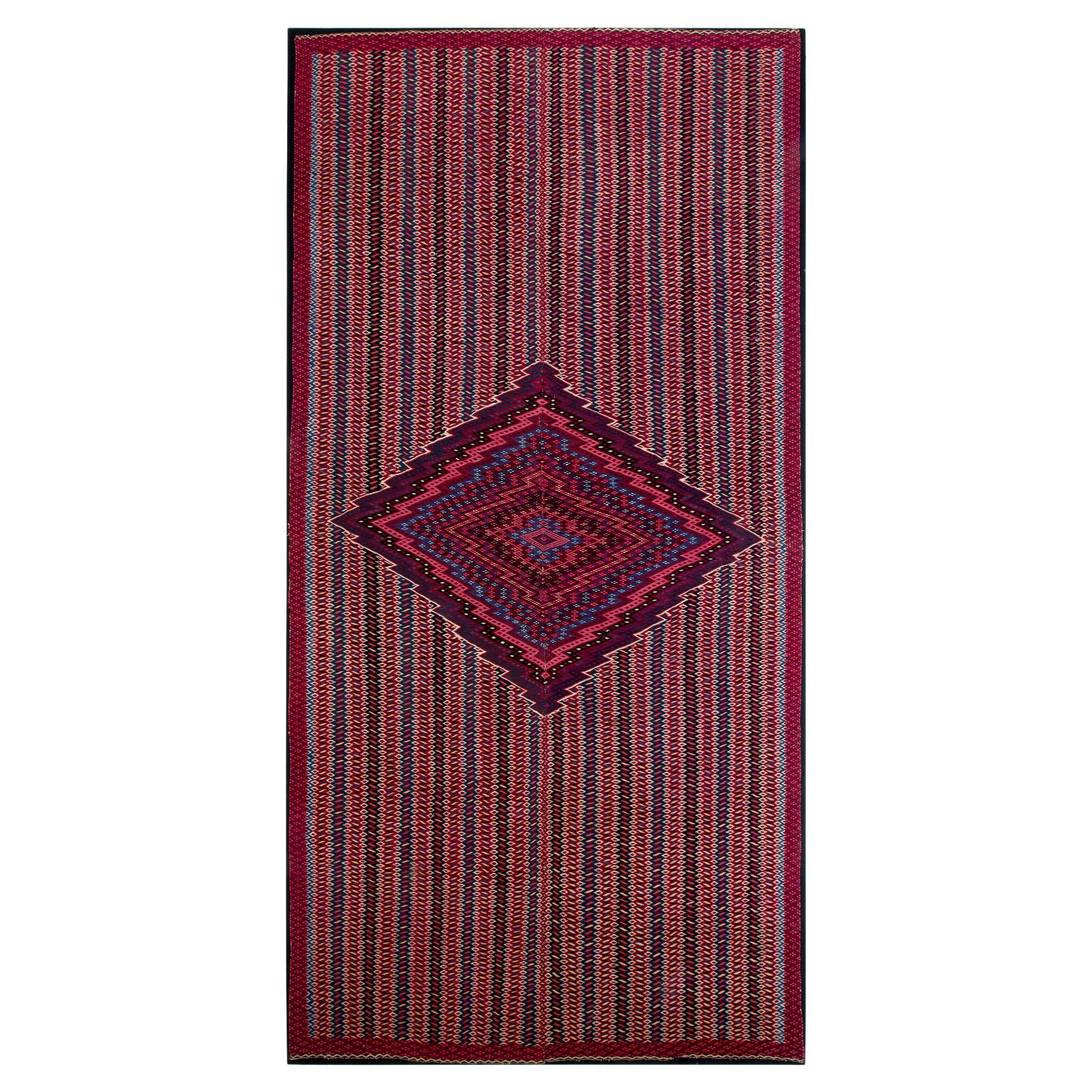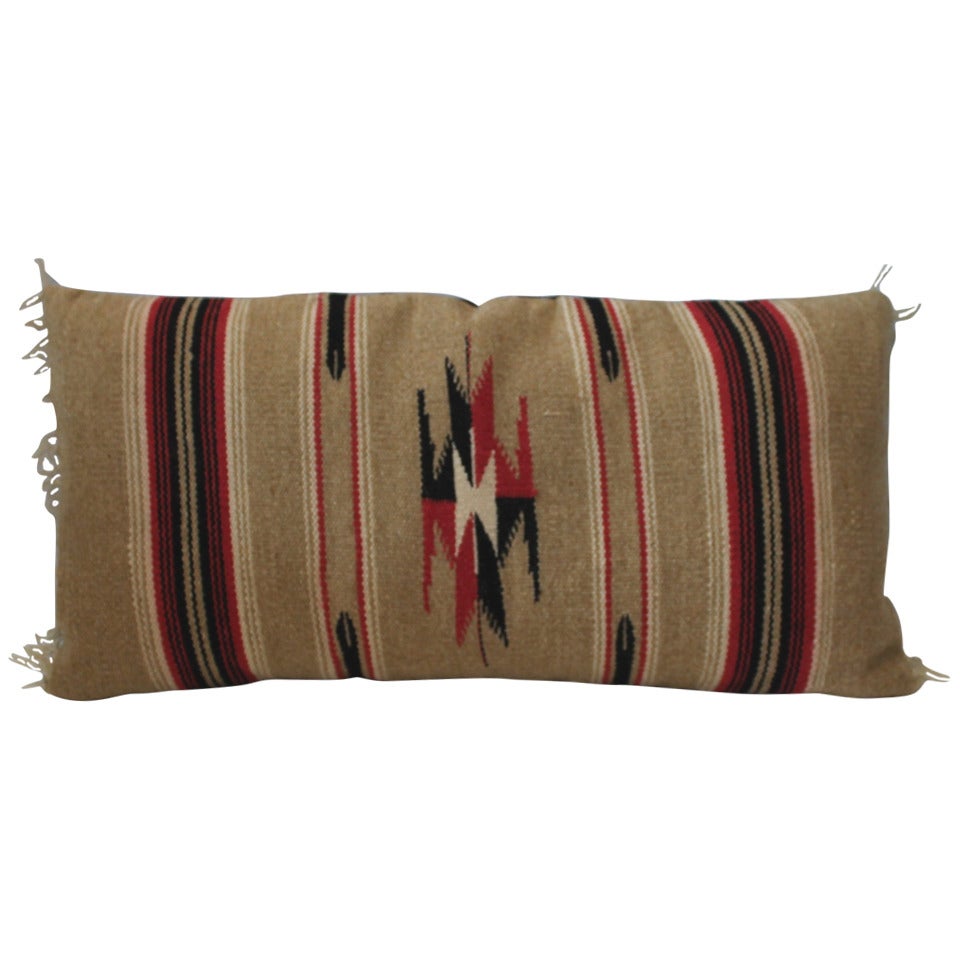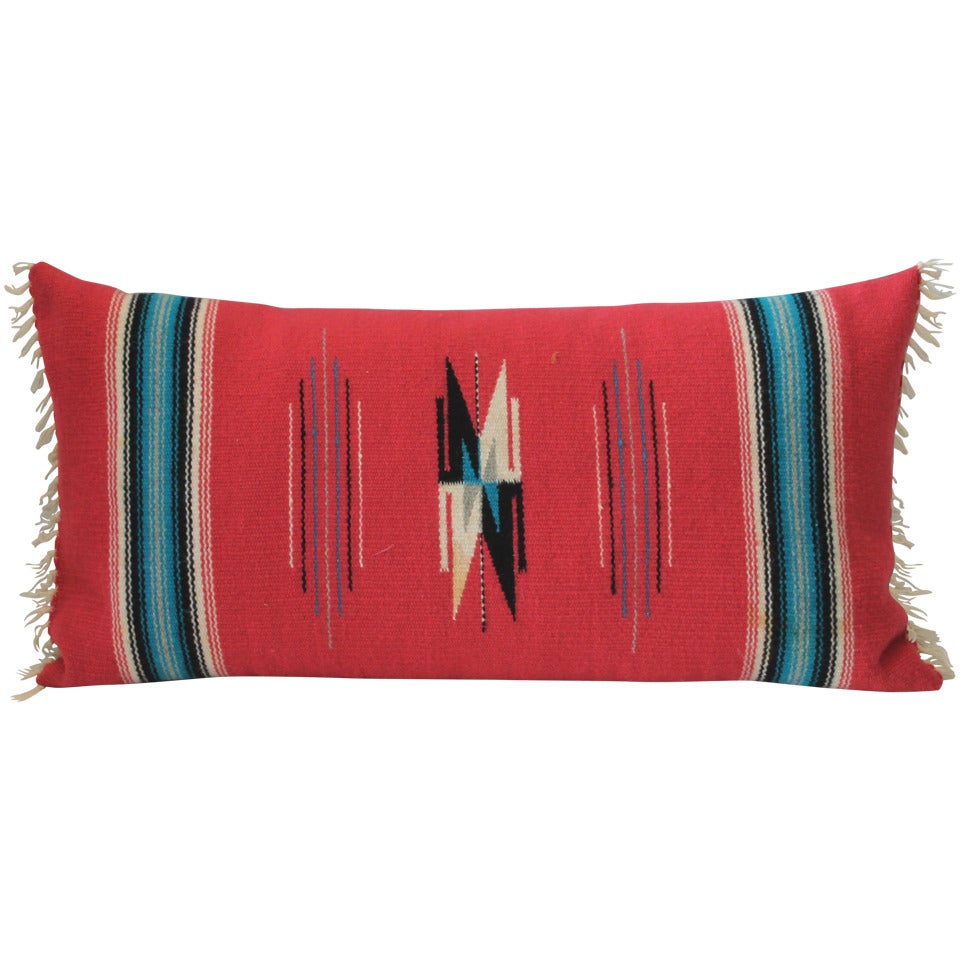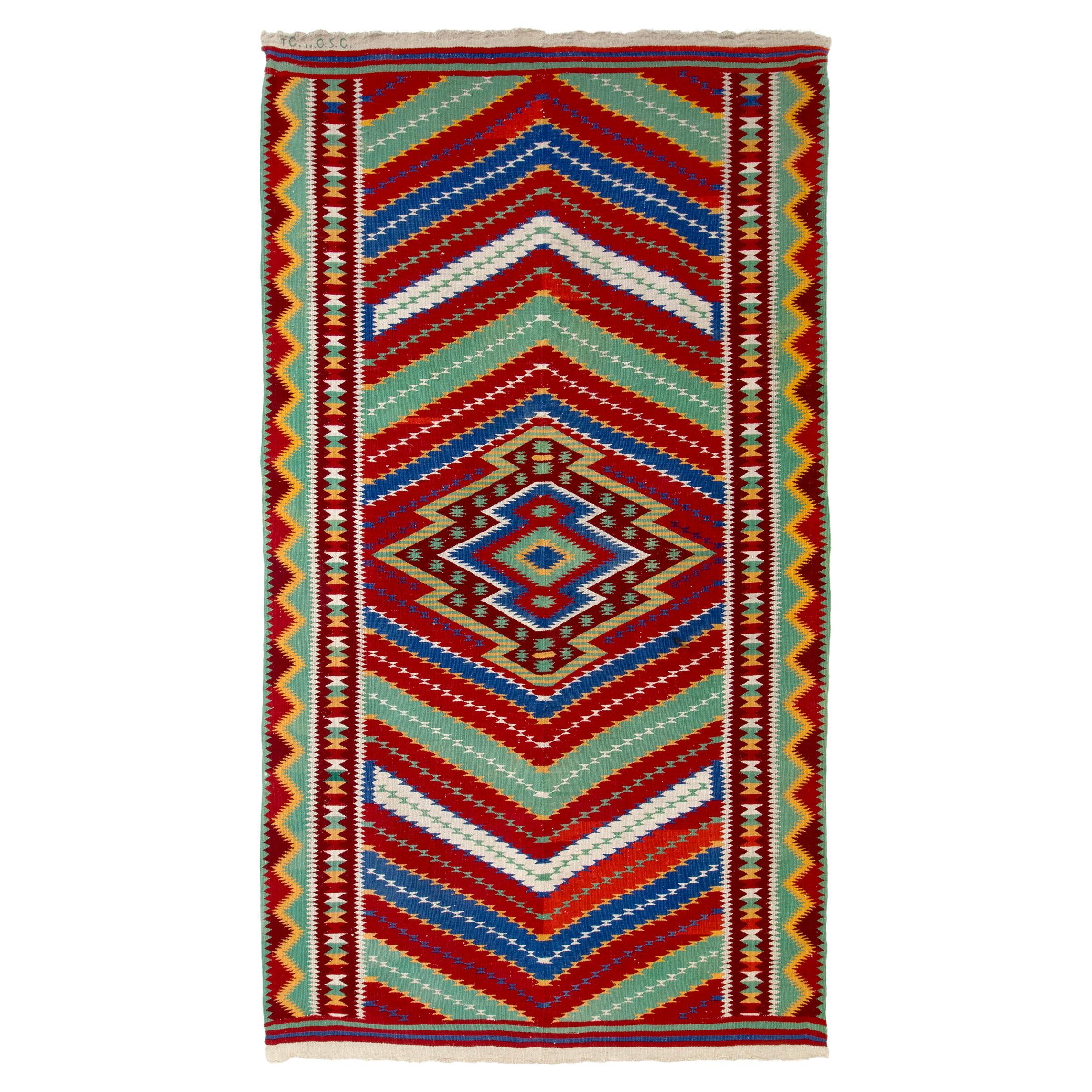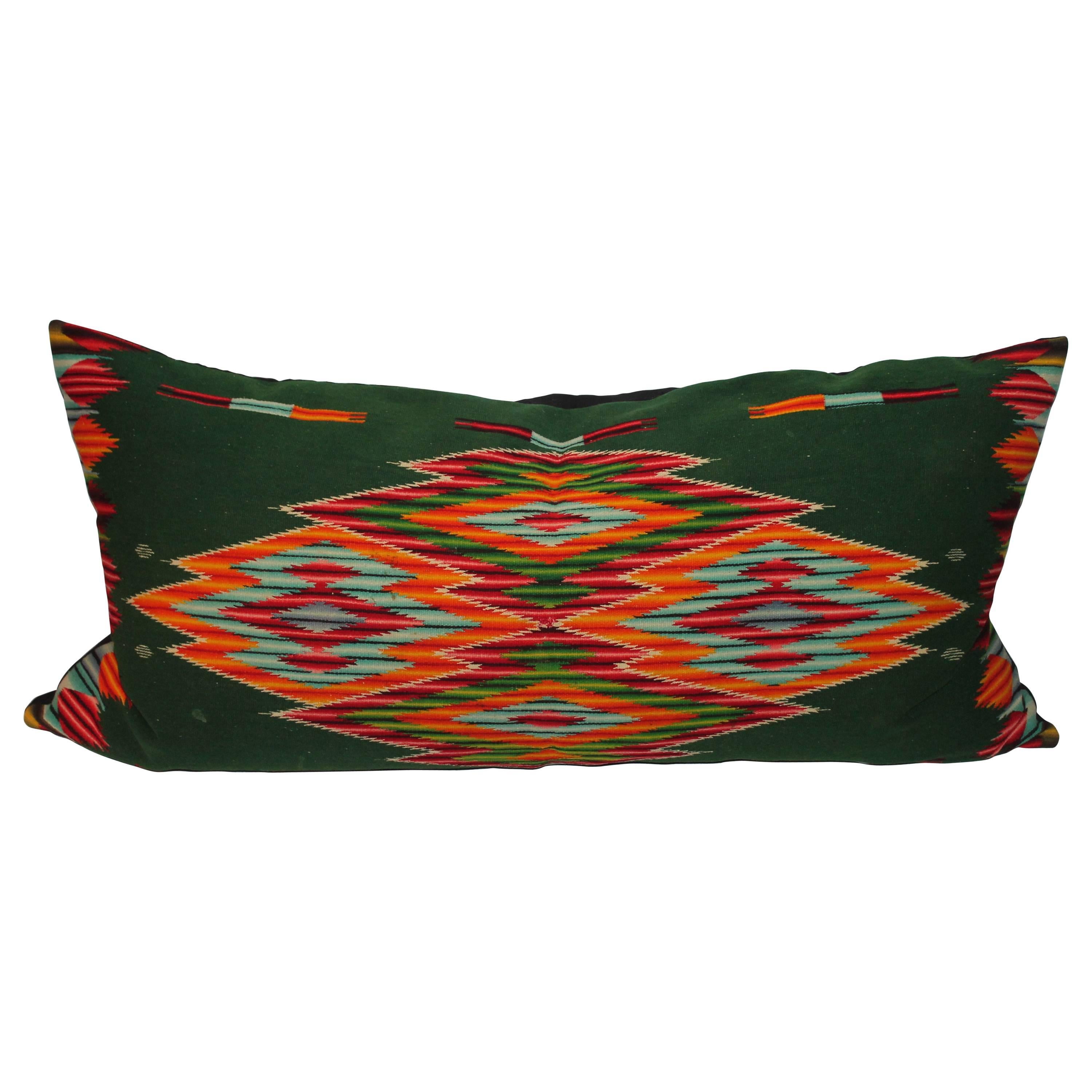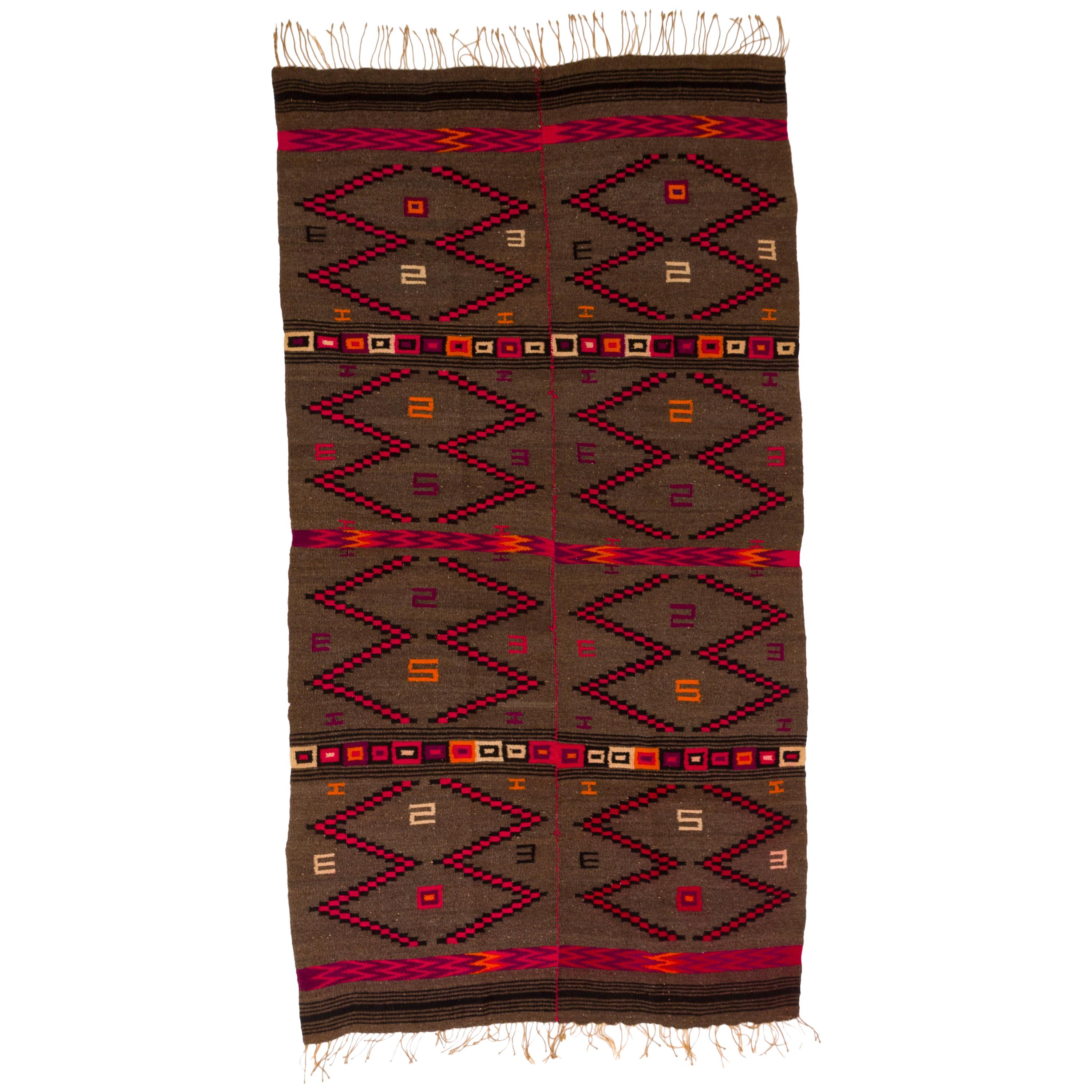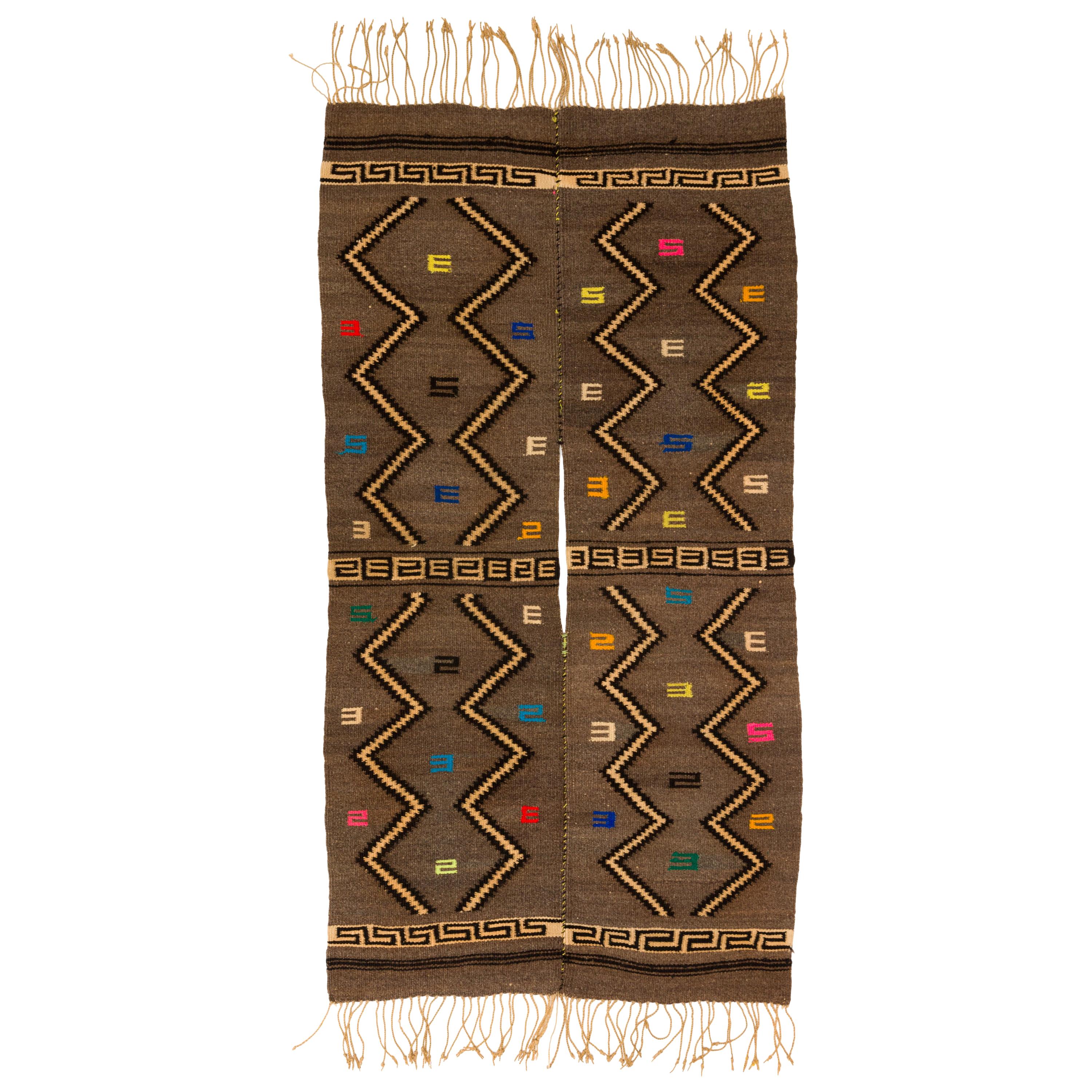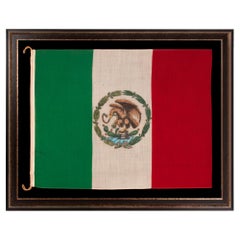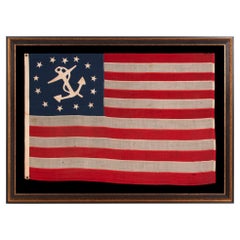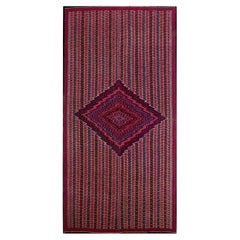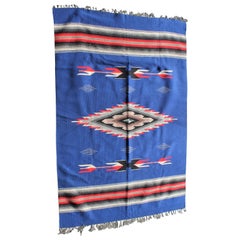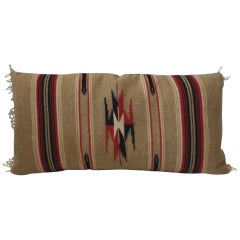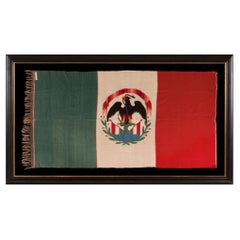
Saltillo Serape, in the Form of the Mexican National Flag, ca 1885-1910
View Similar Items
Want more images or videos?
Request additional images or videos from the seller
1 of 7
Saltillo Serape, in the Form of the Mexican National Flag, ca 1885-1910
About the Item
- Dimensions:Height: 54 in (137.16 cm)Width: 95 in (241.3 cm)Depth: 2.5 in (6.35 cm)
- Materials and Techniques:
- Place of Origin:
- Period:
- Date of Manufacture:1885-1910
- Condition:See Item Description.
- Seller Location:York County, PA
- Reference Number:Seller: otx-0271stDibs: LU849729692632
About the Seller
5.0
Recognized Seller
These prestigious sellers are industry leaders and represent the highest echelon for item quality and design.
Established in 1991
1stDibs seller since 2008
61 sales on 1stDibs
Typical response time: 9 hours
More From This SellerView All
- Mexican National Flag, Hand-Panted, ca 1917-1934Located in York County, PAMEXICAN NATIONAL FLAG IN THE DESIGN USED BY REVOLUTIONARIES FROM 1917 - 1934, THE FIRST PERIOD IN WHICH THE EAGLE WAS ILLUSTRATED IN SIDE VIEW; MADE OF GABARDINE WOOL AND WOOL BUNTING, WITH RICH COLORS AND A HAND-PAINTED DEVICE, USED IN THE LATTER YEARS OF THE ERA OF PONCHO VILLA (b. 1878, d. 1923) Flag of Mexico, in the design adopted in 1917 by the revolutionary government, in use until a re-design of the seal took place in 1934. This covered part of the principal era of Francisco "Poncho" Villa. The field is comprised of the expected vertical bars of green, white, and red, with the charge on the white bar. This is the first period in which the device consisted of an eagle in side view, instead of with breast forward. Perched on a rock that protrudes from a body of water, with prickly pear cactus growing outward and upward from each side, the war-like bird grips a rattlesnake in its proper right talon and beak. The image is cradled within an open wreath of oak and laurel branches, tied with a bow at their juncture, in the bottom center. The bow is striped with the national colors. One year before this flag was accepted, in 1916, U.S. President Woodrow Wilson sent General John Pershing to capture Poncho Villa, whose loyalty shifted as he attempted to gain power. The chase ended abruptly in 1917, when the U.S. entered WWI (U.S. involvement 1917-1918). It was in this year that the U.S. recognized the Carranza government of Mexican Revolutionaries...Category
Mid-20th Century Mexican Political and Patriotic Memorabilia
MaterialsCotton
Price Upon Request - Native American Beadwork Gauntlets with an Chief, ca 1880-90Located in York County, PANative American beadwork gauntlets with Indian Chiefs in feathered headdresses, probably souix, Ca 1880-90 Native American beadwork gauntlet...Category
Antique Late 19th Century American Native American Objects
MaterialsLeather
- Outstanding 13 Star Hand-sewn American Private Yacht Flag, ca 1865-1885Located in York County, PAOUTSTANDING, 13 STAR, ANTIQUE AMERICAN PRIVATE YACHT ENSIGN WITH GREAT FOLK QUALITIES THAT INCLUDE AN UNUSUALLY WIDE ANCHOR AND A DECIDEDLY LOPSIDED RING OF 13 STARS; MADE DURING THE 2ND HALF OF THE 19TH CENTURY; ITS DEVICE HAND-SEWN AND SINGLE-APPLIQUÉD Private yacht ensigns were approved American signals for maritime use that allowed pleasure boats to bypass customs. Though the legislation that approved them was adopted prior to 1850, almost all such flags that one will encounter were sewn by electric machine and made during the 20th century. The unusual gems among surviving examples are those that are earlier and include hand-sewn elements. Even more rare are a select few with atypical graphics. Barely any fall into both of these categories at once. Take note of the anchor on this particular flag, wide a long horizontal crossbar (stock) that contributes to uncommonly wide stance. Set within a ring of stars that is decidedly lopsided, the result is as bold as it is endearingly whimsical—two of the best qualities in American folk art, a category in which this particular example can be filed. While I have owned 13 star private yacht flags that have displayed star and canted anchor devices that were somewhat larger and/or bolder than typical, I cannot recall any that were so graphically intriguing as this one. Brief History of Private Yacht Ensigns: The medallion configuration, 13-star, 13-stripe flag, with a canted center anchor was entered into official use in 1848, following an act of Congress, that made it the official signal for U.S. pleasure sailing vessels. The need for such a flag arose with the popularity of boating as a pastime for well-to-do Americans, and as a competitive sport, in addition to its longstanding utilitarian role as a vehicle of trade. In early America, all boats were subject to customs searches at every port. Without modern income tax, the federal government derived its revenues mostly from tariffs, so an accounting of foreign goods on ships was a critical venture. As yachting for pleasure became more prevalent, however, more and more time was spent searching boats that had no such inventory, wasting time for both customs officials and wealthy ship owners. John Cox Stevens, a former president of the Jockey Club and future founder of the Union League Club, became the New York Yacht Club’s Commodore upon its founding in 1845. In 1847 he approached the secretary of the treasury and suggested that something be done to streamline the customs process for non-trade vessels. In 1848, legislation passed Congress requiring registration of these boats, which could then fly the “American Yachting Signal” to bypass customs. This remained on the books until the 1980’s, when the 1848 legislation was revoked, but the use of flags in this design for decorative function continues to this day. 13 star flags have been flown throughout our nation’s history for a variety of purposes. In addition to their use on private yachts, they were hoisted at patriotic events, including Lafayette’s final visit in 1824-25, the celebration of the nation’s centennial in 1876, and the sesquicentennial in 1926. They were displayed during the Civil War, to reference past struggles for American liberty and victory over oppression, and were used by 19th century politicians while campaigning for the same reason. The U.S. Navy used the 13 star count on small boats until 1916, because it was easier to discern fewer stars at a distance on a small flag. Commercial flag-makers mirrored this practice and some private ships flew 13 star flags during the same period as the Navy. Construction: The stars and anchor are made of cotton, hand-sewn, and single-appliquéd. This means that they were applied to one side of the canton, then the blue fabric was cut from behind each star, folded over, and under-hemmed, so that one star could be viewed on both sides of the flag. I always find single-appliquéd stars more interesting, not only because they are evidence of a more difficult level of seam-work and stitching, but also because they are more visually intriguing. The two visible rows of hand-stitching emphasize their hand-sewn construction. For these reasons, single-appliquéd stars often appeal to connoisseurs of early American textiles...Category
Antique Mid-19th Century American Political and Patriotic Memorabilia
MaterialsWool
Price Upon Request - Elaborate Sailor Souvenir of Washington Crossing the Delaware, ca 1885-1912Located in York County, PAElaborate sailor’s souvenir embroidery from the orient with a beautiful hand-painted image of Washington crossing the Delaware, surrounded by a large eagle, federal shield, crossed flags, a cannon, cannonballs, and anchor, circa 1885-1910: Between roughly 1880 and 1915, American sailors visiting the orient could obtain beautiful needlework embroideries on shore, with patriotic American themes. These extraordinary works of art were acquired as mementos of a long voyage, often with the hope that they might be presented as gifts for loved ones and friends. Using silk floss, elaborately embellished with both silver and gold metallic bullion thread...Category
Antique Late 19th Century Asian Political and Patriotic Memorabilia
MaterialsSilk
- Angora Chaps with Beautiful Tooled Leather, Made by John Clark SaddleryLocated in York County, PAWooly, angora chaps with beautifully tooled leather, made by the John Clark saddlery company of Portland, Oregon, signed, circa 1873-1929. Wooly chaps ...Category
Antique Late 19th Century American Native American Objects
MaterialsLeather
- Paint-Decorated "Snowflake" Parcheesi Gameboard, ca 1885Located in York County, PAPAINT-DECORATED "SNOWFLAKE" PARCHEESI GAMEBOARD IN CHEDDAR YELLOW & RED, circa 1885 Parcheesi game board, painted on a wooden plank with applied, molded trim. Rendered in red, whit...Category
Antique 1880s Game Boards
MaterialsWood
You May Also LikeView All
- Antique 1850s Mesoamerican Saltillo Serape Transitional Mounted TextileLocated in Denver, COMesoamerican Saltillo Serape transitional textile from 1850, made of wool with natural dyes in red, pink, blue, white and black. Presented securely mou...Category
Antique Mid-19th Century American Native American Native American Objects
MaterialsWool
- Mexican / American Serape in Unusual ColorsLocated in Los Angeles, CAThis fine Mexican / American serape weaving is in pristine condition and wonderful unusual colors. The fringe is very good too.Category
Mid-20th Century American Adirondack Quilts and Blankets
MaterialsWool
$575 Sale Price35% Off - Mexican-American Serape Bolster PillowLocated in Los Angeles, CAThis neutral tan background Indian weaving is in wonderful condition and made a great statement as a bolster pillow. The backing is in tan cotton linen backing. Insert is down and fe...Category
Vintage 1930s American Native American Objects
MaterialsWool
$475 Sale Price46% Off - Mexican Red Serape Bolster PillowLocated in Los Angeles, CAThis vibrant red ground Mexican or American Indian weaving has bold colors and in great condition. The backing is in a black cotton linen and down and feather fill.Category
20th Century American Adirondack Native American Objects
MaterialsWool
$595 Sale Price37% Off - Rio Grande Serape, 1880s Saltillo, Germantown Yarns Diamond Pattern, Red GreenLocated in Denver, COAntique circa 1880 Rio Grande Saltillo Sarape, hand woven of Germantown yarns in colors of red, green, golden yellow, blue, and white in a diamond pattern, fringed at either end. Ready to hang on the wall with custom velcro mount (fully removable). The Rio Grande style of serape developed in the Southwestern United States in present day New Mexico and was inspired by Mexican Saltillo Serapes...Category
Antique Late 19th Century American Spanish Colonial Native American Objects
MaterialsWool, Cotton
- Indigo Texcoco Mexican Wool Serape BlanketLocated in New York, NYHandwoven Texcoco natural indigo and ivory wool serape blanket with traditional designs. Measures: 83" length with fringe, 75.5" length blanket body, 44...Category
20th Century Mexican Tribal Native American Objects
MaterialsWool
Recently Viewed
View AllMore Ways To Browse
American Flag Textile
Memory Folk Art
Antique Furniture In Sydney
Mexican Woven Blanket
Blanket Wool Mexico
Mexican Wool Blankets
Newspaper Machine
Used Punch Machine
Mexican Painted Bar
Native American Antique Textiles
Antique Mexican Textiles
Smith Brothers Furniture
Metal Conservatory
Mario Villa Furniture
Mario Villa
Spanish Eagle
Salt Mill
Cactus Fabric
